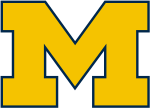University of Minnesota College of Science and Engineering
1935 establishments in MinnesotaEducational institutions established in 1935Engineering schools and colleges in the United StatesEngineering universities and colleges in MinnesotaUniversity of Minnesota
The College of Science and Engineering (CSE) is one of the colleges of the University of Minnesota in Minneapolis, Minnesota. On July 1, 2010, the college was officially renamed from the Institute of Technology (IT). It was created in 1935 by bringing together the University’s programs in engineering, mining, architecture, and chemistry. Today, CSE contains 12 departments and 24 research centers that focus on engineering, the physical sciences, and mathematics.
Excerpt from the Wikipedia article University of Minnesota College of Science and Engineering (License: CC BY-SA 3.0, Authors).University of Minnesota College of Science and Engineering
Southeast Pleasant Street, Minneapolis
Geographical coordinates (GPS) Address Nearby Places Show on map
Geographical coordinates (GPS)
| Latitude | Longitude |
|---|---|
| N 44.975277777778 ° | E -93.236305555556 ° |
Address
Walter Library
Southeast Pleasant Street 117
55455 Minneapolis
Minnesota, United States
Open on Google Maps







